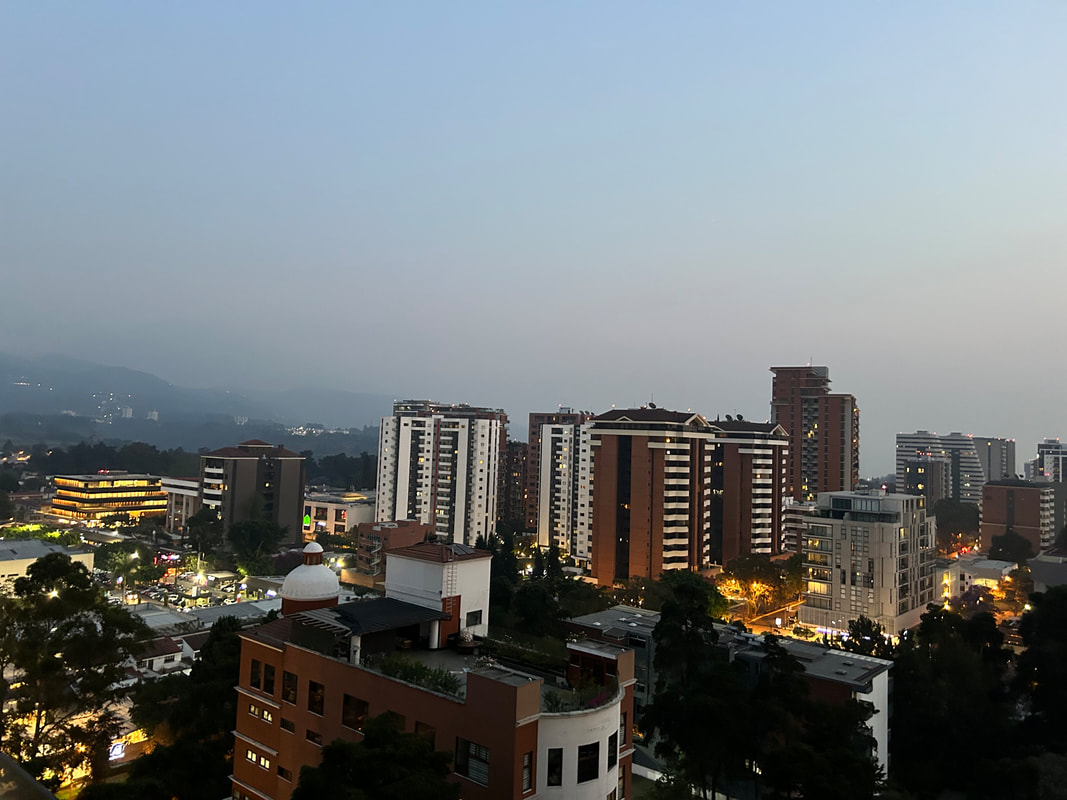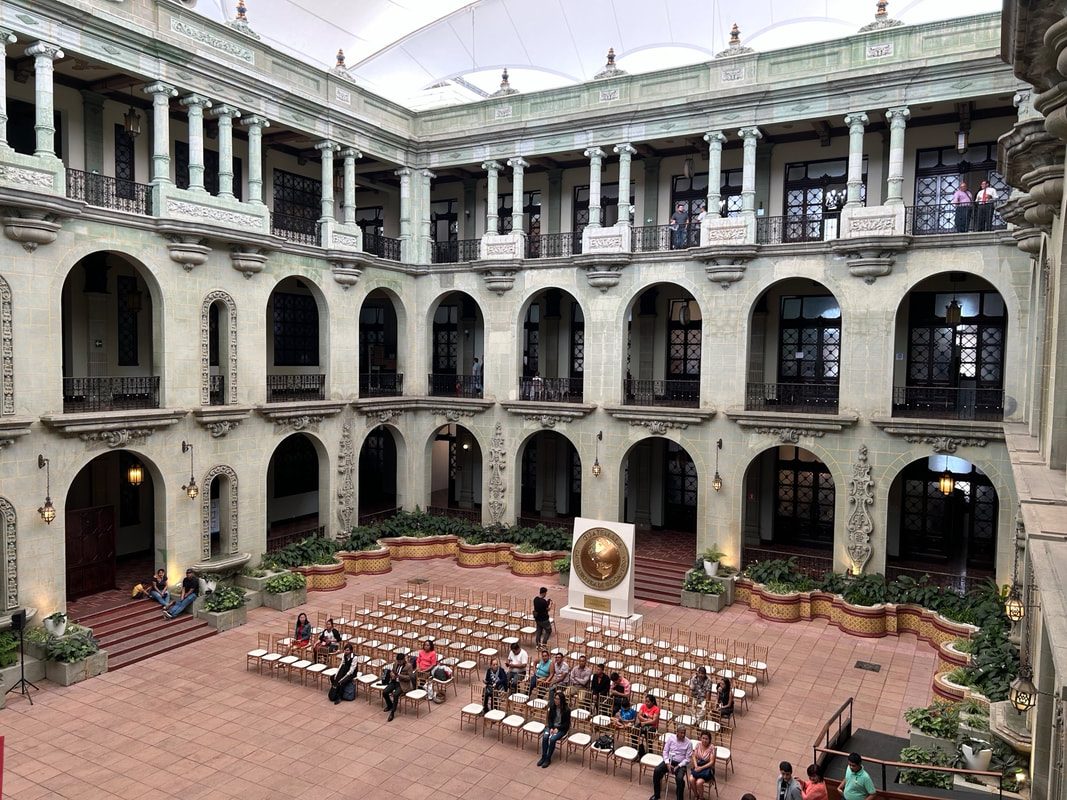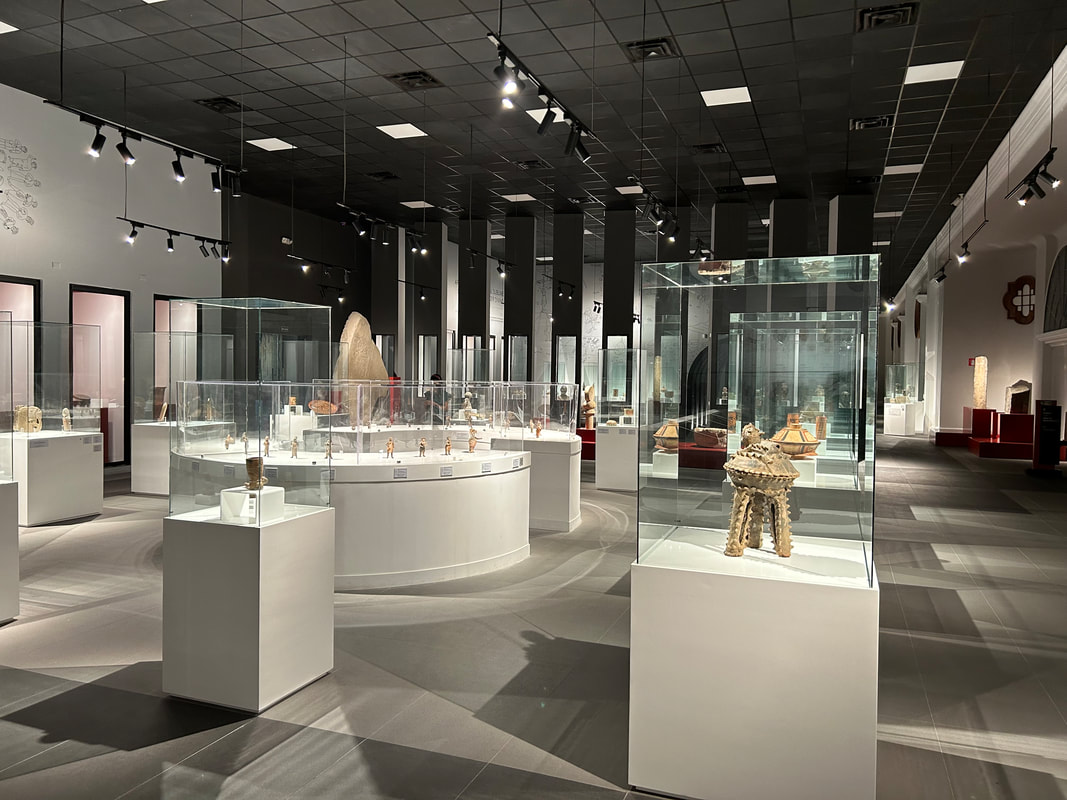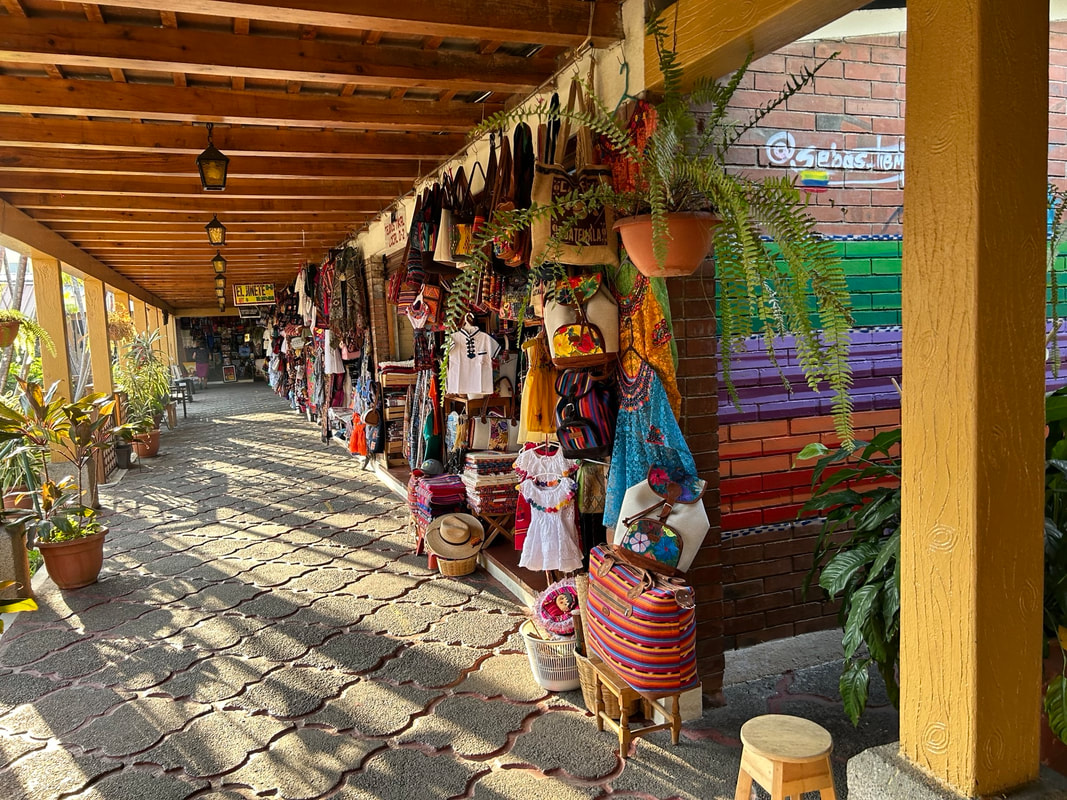SummaryAirport Rating **** Reception of locals *** Cost: ££1/2
The Mayans, the Spanish, the Modern DayI won't lie. Guatemala has never been a place that I thought I would visit, nor is it a place I particularly wanted to visit. More out of ignorance than dislike. I just didn't know enough about it. I knew about the Mayans, but the modern day country? Nothing further than a few articles here and there. But I had the opportunity to visit the country for two weeks, and I'm very glad because it helped dispel some of that ignorance. For those less familiar with the country, Guatemala is a country that shares its borders with Mexico to the north and west, Belize to the northeast, and Honduras and El Salvador to the southeast. The nation is characterised by its varied landscapes, ranging from rainforests and mountain ranges to volcanic terrains and coastal plains. Guatemala's strategic location has played a pivotal role in its historical development, making it a crucial passage for migration and trade among ancient civilizations. Not only does it have a coastline on both the Pacific and Atlantic Oceans, but it also helps connect North and South America. The history of Guatemala is marked by the rise and fall of the powerful Maya civilisation, which flourished in the region from around 2000 BC to the 10th century AD. The Maya people were advanced in various fields, including maths, astronomy, and agriculture, and left behind a rich legacy of architecture, art, and knowledge. They've been a people that have intrigued me ever since I picked up a children's book on Mesoamerica in a library when I was still in school and they still do to this day. The arrival of the Spanish in the 16th century led to the colonisation of the region, profoundly impacting its social, economic, and political landscape. Guatemala gained independence from Spain in 1821, first as part of the Federal Republic of Central America, and later as a sovereign nation. Today, Guatemala is a republic with a diverse population that includes various indigenous groups, mestizos (mixed European and indigenous ancestry), and small communities of African and European descent. The country includes more than 20 indigenous languages spoken alongside Spanish, the official language (similar to the experience I had in Peru that you can read about here). The good, the bad, and the criminalGuatemala City, officially known as La Nueva Guatemala de la Asunción, is the capital and largest city of Guatemala, functioning as the political, social, cultural, and economic heart of the country. With its establishment in 1776 after a devastating earthquake destroyed the then-capital, Antigua Guatemala, the city was planned with a regular grid pattern, influenced by Spanish colonial architecture and urban design. This layout is still evident in the city's historical centre, Zone 1, where old and new elements of urban development coalesce. The metropolitan area's population is almost 3 million, making it the most populous city in Central America, or twice the size of Birmingham in the UK to it into perspective. The city's demographics have been shaped by internal migration, with individuals and families moving from rural areas to the capital in search of better economic opportunities. This has contributed to rapid urban expansion, with the city now sprawling into neighbouring municipalities, leading to a mix of urban and peri-urban landscapes. This growth has brought about challenges, including housing, infrastructure, and services to meet the needs of its expanding population. It's not a safe city, let me make that clear from the start. Crime and safety remain significant concerns and issues such as gang violence, drug trafficking, and petty crimes have impacted the city's security environment. The government, in response, has implemented various strategies to combat crime, including police reform, community policing initiatives, and social programs aimed at providing alternatives to gang involvement for the youth, but the truth is, private security companies are a necessity in the city, and throughout the city you can see armed private security personnel everywhere - including riding around in pick-up trucks, or just patrolling the streets. The airport is fine though. It's a little run down, but a decent size and I had no issues either flying into the city or flying out - security checks were minimal to say the least. The only tricky thing is you need an arrival card (QR code based) which means before you can go through customs you must first show this to guards. It's basically a digitised form of landing cards you get elsewhere, but only the QR code is accepted. However, it doesn't seem to be checked at all against anything so it took me a couple minutes on my phone to complete, and even though the information was incomplete, there were no questions. Catedral MetropolitanaI visited several zones in the city and perhaps my least favourite is the oldest - Zone 1. It has significant security issues despite being home to some of the most important institutions within the country. Outside the main square, it becomes very run down, very quickly. Outside almost any shop that is open, there stands at least one guard, always armed and it all feels a little dystopian. But that doesn't mean Zone 1 is without any beauty. The Catedral Metropolitana is situated in the heart of Guatemala City's Zone 1, near the central plaza known as Plaza de la Constitución. This cathedral serves as the main church of the Archdiocese of Guatemala. The origins of the Catedral Metropolitana trace back to the late 18th century, with its construction beginning in 1782 under the directive of Spanish colonial authorities. The project was a response to the destruction of an earlier cathedral in Antigua Guatemala caused by the Santa Marta earthquakes in 1773. The cathedral embodies the Baroque and Neoclassical architectural styles, which were prevalent in colonial religious buildings throughout Latin America as well as in the parent country of Spain. Construction of the cathedral was finally completed around 1815 and it's definitely beautiful. The exterior is adorned with columns and intricate sculptures that depict religious figures and motifs. When I entered there was a big sign in Spanish telling vendors they could not make any sales on the premises. Did it work? Kind of. Technically they weren't in the cathedral grounds, but they hung around the gates in decent numbers. Inside, the cathedral houses several chapels, each dedicated to different saints and religious figures, adorned with altars, paintings, and sculptures. One of the most poignant features of the cathedral is the series of 12 pillars on its front plaza, each bearing a plaque in memory of the thousands of people who disappeared or were killed during Guatemala's civil war. It is sparsely decorated, especially compared to some of the cathedrals you find in Italy and Spain, but the brilliant plain white that covers the walls and ceilings seems to add to the grandeur. Palacio NacionalAcross the main square is the Palacio Nacional, also known as the National Palace of Culture, one of the most important buildings in the whole country. The palace's inception traces back to the era of General Jorge Ubico, one of Guatemala's most notable dictators, who initiated its construction in the early 20th century. The construction of the Palacio Nacional was completed in 1943 and is a blend of neoclassical and Spanish Renaissance influences with a green-tinted exterior, a result of the materials used, including Guatemalan marble and other local stones, reflecting the country's natural beauty. To get in, you need to register using a QR code, but then pay using cash - which kind of makes the QR bit seem a little redundant. It's not the most straightforward process, and when one of the workers noticed that I was struggling a little, she came over to help out and got me through the process. I joined a Spanish speaking tour group, which lasts about an hour. I've been learning Spanish for several years now so it was good to follow along - but it also reminded me how much I hate tour groups. The whole tour moved so slowly through the building that I found myself switching off in most places. That's not a knock on the tour guide who was an incredibly passionate and knowledgeable person, but perhaps reflects more my tiny attention span. The Palacio Nacional covers an expansive area, featuring a square layout with a central courtyard (during my trip, there was a small musical demonstration happening). One of the most significant features of the Palacio Nacional is the ceremonial staircase, which leads to the second floor. This staircase is not just a physical structure but a piece of art, with each step narrating a part of Guatemala's rich heritage through detailed carvings and decorations. Behind the stairs on the walls are large paintings covering important moments in the history of the country, including the Spanish conquest of the Mayan homelands. The second floor houses the Hall of Banquets, a room used for official state functions and events and has an impressive dome, stained glass windows and a large Guatemalan flag front and centre. In the late 20th century, the Palacio Nacional underwent a significant transformation. It was declared a cultural heritage site, ensuring its preservation for future generations. This transition marked a new chapter in the palace's history, shifting from a government seat to a cultural hub. Today, it is home to the National Museum of History, and seemed to have offices throughout the building. It's a really beautiful building and should definitely be on your list if you find yourself in the city. The MuseumsThe beauty doesn't just extend to two buildings on one square - there are several very cool museums in the city, including two on a university campus and two nearer the airport. The Museo Nacional de Arqueología y Etnología was established in the late 19th century and sits opposite the Museo Nacional de Arte Maya - two art deco buildings. The museum is free to visit and boasts a vast collection of over 20,000 artefacts that span various periods of Guatemala's history, from the pre-Columbian era to the post-conquest period. These items include ceramic vessels, stone sculptures, jade jewellery, textiles, and other objects that shed light on the daily lives, religious practices, and socio-political structures of the ancient Maya and other indigenous peoples. One of the museum's highlights is its extensive collection of Maya stelae, large stone slabs engraved with glyphs and images that record historical events, royal lineages, and religious ceremonies. These stelae are crucial for understanding Maya hieroglyphic writing and astronomy, offering insights into the advanced knowledge and skills of this ancient civilization. An important aspect of the museum's work is its involvement in archaeological research. The Museo Nacional de Arqueología y Etnología collaborates with national and international institutions on excavations and studies that expand knowledge of Mesoamerican civilizations. The findings from these research projects often enrich the museum's collection and contribute to the academic literature on the region's archaeology and anthropology. It's not the largest museum in you'll come across, comprising generally of three large rooms, but there is enough in there that means you should spend at least an hour. The layout is modern, spacious, and open - and the exhibits and artefacts are genuinely fascinating - particularly the funeral urns which are artistically decorated pots where dead people would be placed - something I've never seen before. Across the city is a leafy green university campus which, when you enter, makes you feel like you're on the campus of a red-brick university in the UK. The campus has beautiful gardens, and it slopes down away from the city, transporting you far away from the polluted and gritty grey of the rest of the city. Within the campus there are two museums opposite each other, and I visited the Museo Popol Vuh, a highly rated museum dedicated to the preservation, study, and dissemination of the country's Pre-Columbian heritage and culture. Named after the "Popol Vuh," a foundational K'iche' Maya text which encapsulates the mythology, history, and traditions of the Maya civilization, the museum was founded with the intent to safeguard Guatemala's archaeological treasures, which were at risk of being lost to private collections and overseas museums. This initiative was aimed not only at preserving these artefacts within their country of origin but also at fostering a deeper understanding and appreciation of Guatemala's ancient civilizations among both nationals and visitors. The museum's collection is pretty big, encompassing a wide array of artefacts that date back to the Preclassic period (2000 BCE to 250 CE) through to the Postclassic period (900-1500 CE) of Mesoamerican history. These artefacts include ceramic ware, stone sculptures, funerary urns, jade pieces, and a variety of other items that were used in daily life, religious ceremonies, and burial rituals. There is also a section of the museum that houses a collection of colonial art, providing insights into the period of Spanish conquest and its impact on the indigenous cultures of the region. Compared to the Museo Nacional de Arqueología y Etnología, the Museo Popol Vuh is smaller and feels more dated (and not in a good way) but I thought the story of the museum, the narrative that it guides you through, and the excellent artefacts on display were just as impressive. I found one "book" of the Maya to be particularly impressive - and yep, the urns were here too. Shopping in Guatemala CityGuatemala City also has a few destinations for shopping. It's never something at the top of my list, but I had lost a bag full of chargers for laptops and phones on the plane so ventured out to get some replacements. You have everything from traditional markets, souvenir stands, standalone shops, and then your large shopping centres. The last one surprised me the most, because the Oakland Mall is a shopping centre that felt completely out of place in Guatemala. Full of largely high-end stores, the place was brand new, better than most shopping centres I've been to in the UK, and packed full of people. Opened just over 10 years ago, this upscale shopping centre is located in the affluent Zone 10, known as Zona Viva, and is one of the most sophisticated malls in Central America. Oakland Mall is a multi-level, architecturally contemporary complex that houses over 200 national and international brands across product ranges. It also has a huge food court. That being said, there are still scams in there. I saw a phone charger for an unreasonably cheap 30 Quetzals (about £3) and it worked for about two charges before breaking. That's my fault for falling for something so cheap. The complete opposite experience of this is Mercado Central, back in Zone 1. This is a more old school market and the layout is like a labyrinth of stalls and vendors all trying to get you to buy something. The market is especially famous for its selection of handmade textiles, pottery, and wood carvings. Unlike Oakland, you can also haggle here. Similar, but much smaller is the Mercado de Artesanías, located near the airport (in fact, every few minutes you can feel the ground shake as planes take off). It's a colourful market but the only reason I visited was that it was close to the Museo Nacional de Arqueología y Etnología and it probably wouldn't be something I would recommend if you are not close by. The 1%While Guatemala is the largest economy in Central America, there is tremendous wealth inequality, and this may also be reflected in racial lines where European descendants horde much more of the wealth than those descended from Mayan tribes. Nowhere is this more apparent than in Plaza Fontabella - a fortress of a cultural complex that brings together the richest 1% of the country, and it is almost all European. Plaza Fontabella is situated in Zone 10, known as Zona Viva, and is a commercial complex that caters to a high-end shopping and dining experience. Things here are expensive - not just Guatemala expensive - but expensive anywhere. Spanning several blocks, Plaza Fontabella is designed to mimic a traditional Spanish colonial town, with cobblestone streets, fountains, and a central courtyard. The architecture incorporates elements such as wrought iron detailing, clay roof tiles, and pastel-coloured facades. The plaza is home to luxury boutiques, gourmet restaurants, cafes, and specialty stores. It is also a cultural and social hub in Guatemala City. The complex frequently hosts events such as art exhibitions, live music performances, and cultural festivals, contributing to the vibrant social life of Zona Viva. During my visit there was a very high-end fashion show with glamorous models showing off expensive goods. Around the perimeter of Fontabella are several bars, restaurants and clubs that get very lively during the evening. This is certainly a safer part of the city. In fact, during the evenings I largely stayed around here, zone 4 (particularly Cuatro Grados Norte), or visited Zone 14 which are other safer area of the city, patrolled by both public and private security. These places were very fun during the evenings. That's not to say you're going to be a victim if you find yourself elsewhere after sunset, that's definitely not the case - but you have to understand that the social situation in Guatemala City is very different to the ones you might have experienced in your hometowns or cities (and I come from a pretty rough neighbourhood) and taking a little extra care and caution is sensible. Would I recommend visiting Guatemala City?Probably not. As a Sikh I experienced no issues at all, either at the airport, or in the city. I'm a decent sized human, so I'm not an obvious victim, but I'm nothing at the end of a gun - so I tried to be smart too. I avoided areas that I knew were dangerous, and particularly at night stayed in the safer parts of town. I took Ubers around the city (they are cheap) but didn't get into an Uber during the night on my own, nor did I take the local white taxis that are a haven for criminals. The city is gritty and home to over two million people. It's the place they live and work, create relationships, look after loved ones, worship, pray, love, and die. I won't just disparage a city for no reason, but as a tourist there is very little to see and do here unless you live or work here. That being said, just because I don't recommend visiting Guatemala City, doesn't mean I don't recommend visiting Guatemala - but we will pick this up in my next article. Comments are closed.
|
AuthorBritish Sikh, born in the Midlands, based in London, travelling the world seeing new cultures. Categories
All
|










 RSS Feed
RSS Feed